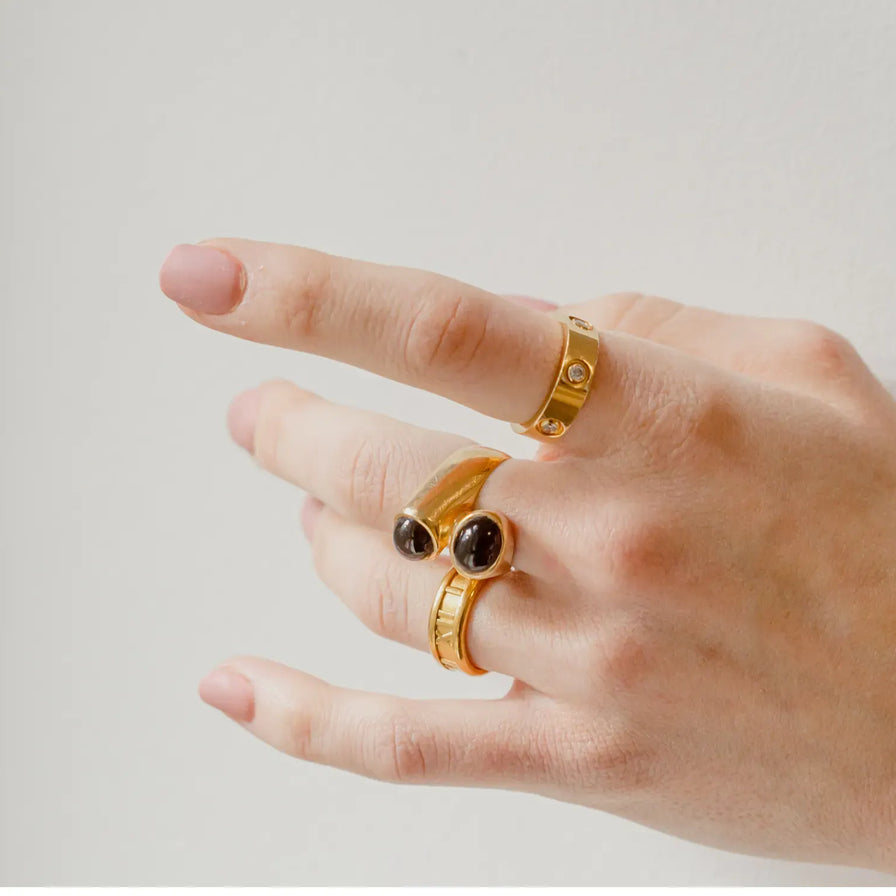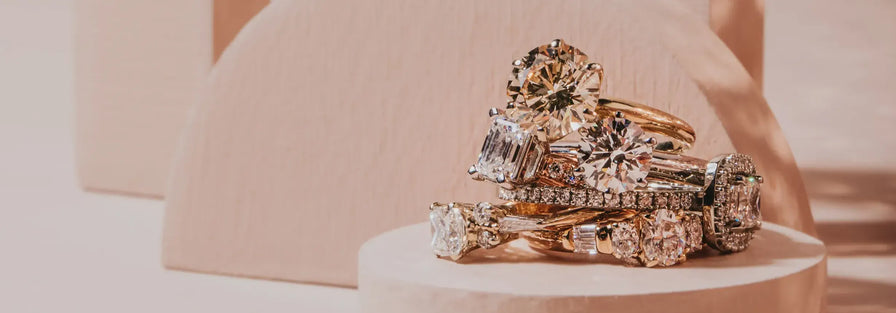In the late 19th century, gold and precious gems availability decreased as a result of the war spreading through Europe at the time. Most of these materials were sacrificed for the war efforts, leaving extraordinarily little for jewellery manufacture
The Georgian Era is remembered in many ways. In America, it was the time of the revolution, the explorations of Lewis and Clark, and George Washington. In France, it was the time of Marie Antoinette and Napoleon. The name of this era, however, comes from the time when King George I – IV reigned in the UK from 1714 all the way to 1837. With a newfound love for the extravagant, and lavish balls sweeping the nation, Georgian jewellery was quite ground-breaking and has helped shape what jewellery is today.
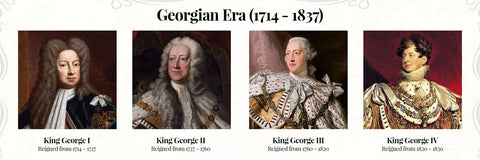
Everyday Jewellery
There were many stylistic changes throughout the Georgian period. Early Georgian-era jewellery celebrated the baroque style, with intricate symmetrical designs as well as a lace-like aesthetic. Many of the common motifs you would see during this period included bows, feathers, flowers, and leaves. Late Georgian jewellery took more of its influence from the Rococo style, which was lighter and more delicate and used asymmetry in many of its designs.

During both style periods, the historical site of Pompeii was being excavated and many jewellery pieces took on a Roman influence. Often featuring intricate cameos, grape vines, leaves, keys, and simple geometric patterns, this style is now referred to as “Neo-classical Georgian”.


Everyday jewellery often was set with pearls, garnet, moss agate and paste gemstones. Paste stones were not precious gemstones at all, but hand-cut leaded glass. They were often cut, placed on a metallic-coloured foil base, and polished until they resembled and gave off an effect like natural gemstones.

The chatelaine was one of the most popular pieces of jewellery a woman could wear during the day. The chatelaine was a delicate clasp or belt hook which was worn at the waist and connected to a series of different chains. The chains were then mounted with useful items such as scissors, pocket watches, keys, and thimbles. Everything they would need in their day-to-day life is easily accessible and on hand! For gentlemen of the era, adorned shoe buckles and fancy buttons were all the rage.


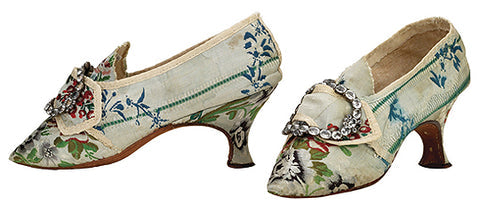
Formal Occasions

With the invention of candles that could burn for much longer than their predecessors, evening get-togethers and parties became more and more common, and the types of jewellery worn to these outings were different than what was to be worn during the day.
At the time, formal events such as balls and receptions were viewed as the only appropriate time to wear diamonds. The cut of gems was either the rose cut, or the old mine cut and you would see them set into many different types of jewellery. Extravagant cocktail rings were quite commonly worn to these get-togethers, as well as pendants and brooches.


However, one of the most popular types of jewellery a woman could own during this era was hair jewellery! With women styling their hair in magnificent towering styles, tiaras, diadems, and hair pins became all the rage and were seen being sported by everyone. Marie Antoinette is one of the most notable and iconic examples of this. She had a sizeable collection of hair jewellery which she wore to any special occasion she could and is often depicted with it on display.


Extravagance on a Budget
In the late 19th century, gold and precious gems availability decreased as a result of the war spreading through Europe at the time. Most of these materials were sacrificed for the war efforts, leaving extraordinarily little for jewellery manufacturers to use. Due to this, Cannetille jewellery gained popularity. Cannetille is a style that uses many tiny wires that intricately wrap around each other to create delicate and ornate pieces of jewellery. This style used very little material in comparison to the other common styles of the era, so it was much more cost-efficient to make and own. Paste jewellery also became even more popular than it already was, as it gave off the illusion of opulence for a fraction of the cost.

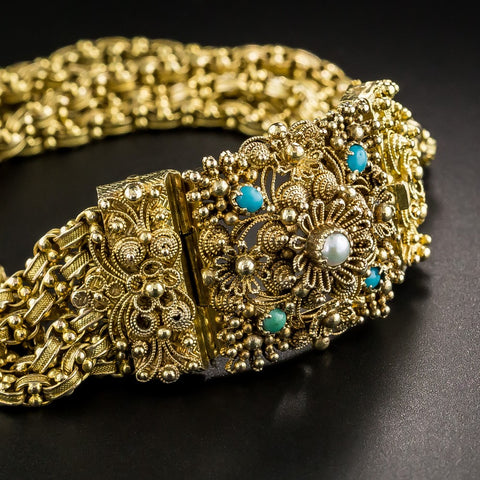
Looking to add a bit of history to your jewellery collection? Take a look at our Georgian jewellery on 100 Ways!

